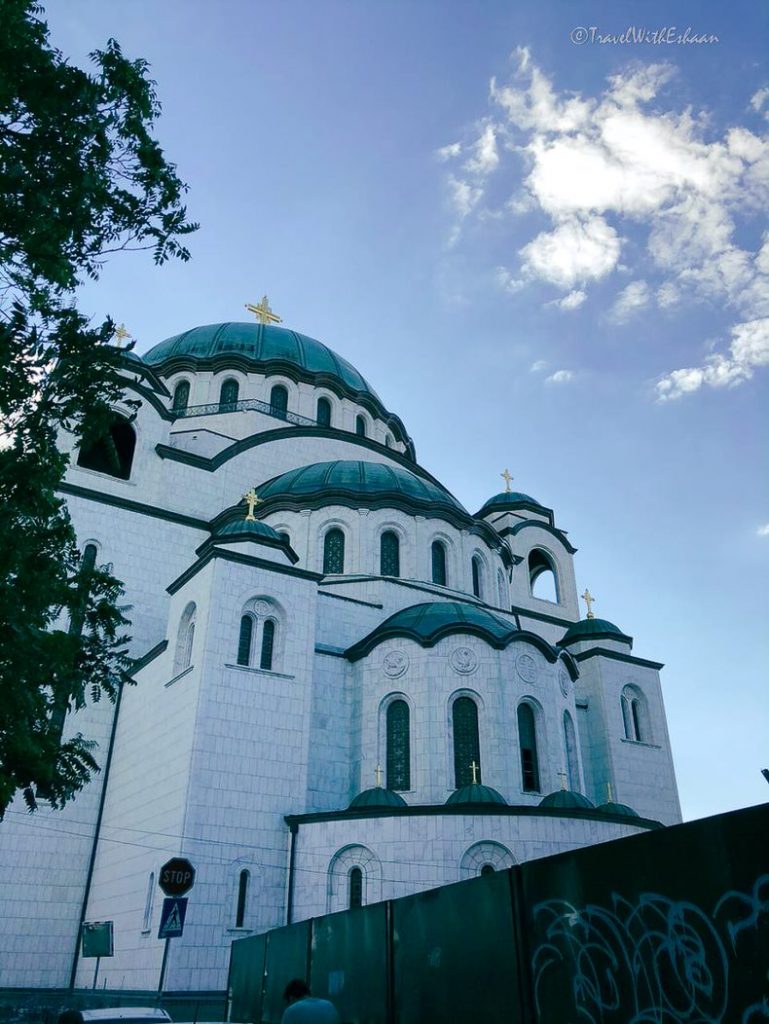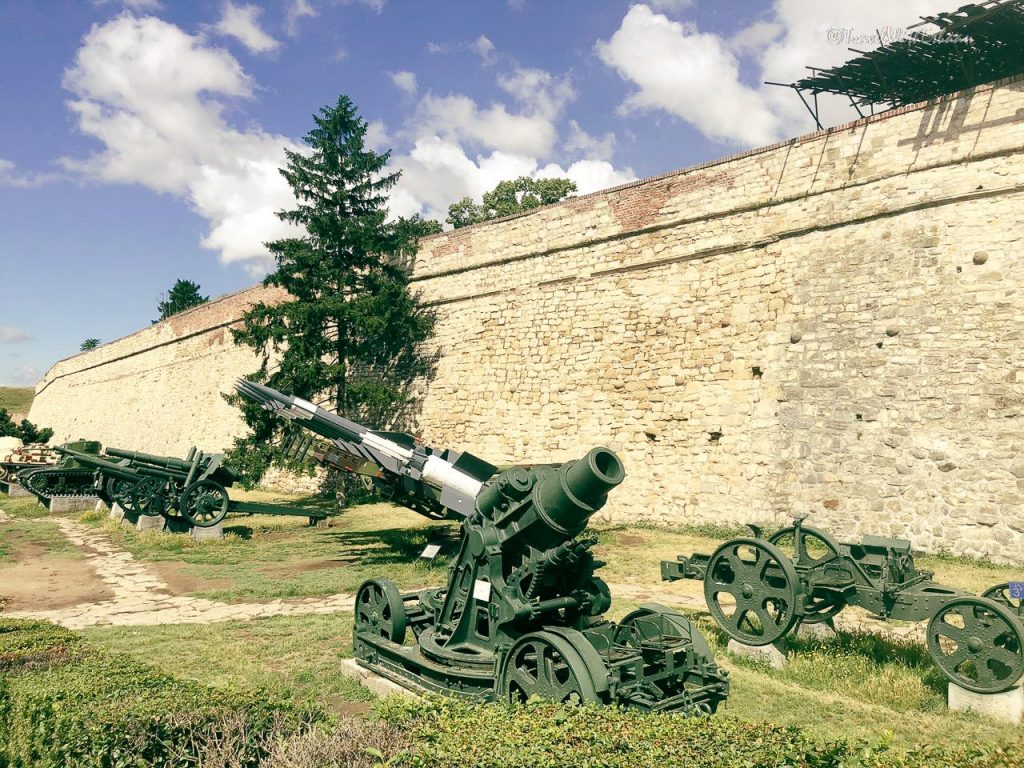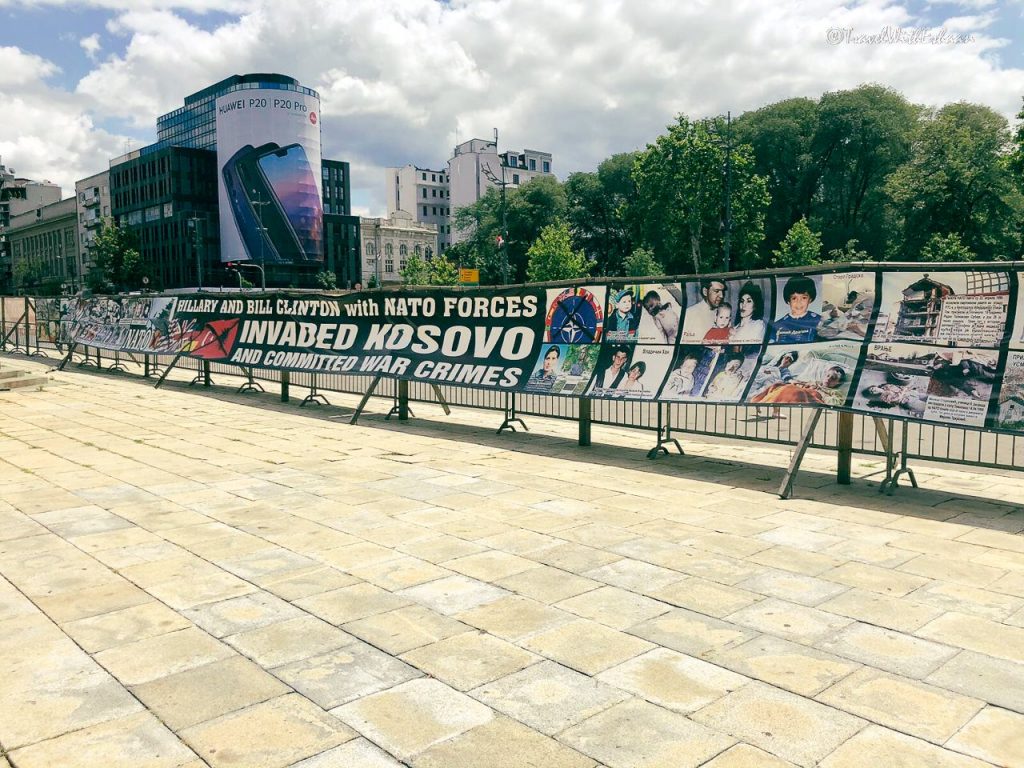
We arrived in Serbia after our stay in Budapest, and a short day trip to Romania. Serbia is the prime example given for a former Yugoslav republic, since it was at the heart of the nation, and so it was fitting we started there. We decided on Belgrade, due to its deep history, and its kaleidoscope of attractions.
We arrived at our Airbnb at around midnight. It was very dark, but that was ok. We were in front of a drab, gray Soviet apartment building, and waited for a few minutes for our host to arrive. It wasn’t long until my parents and our host were conversing. When our host asked where we were going next, we said Macedonia. The host then warned us not to go to Kosovo, claiming it wasn’t safe. We didn’t visit because of our robbery in Greece, so we never got to know if it was the truth.
After getting all our luggage into the Airbnb, we got a pleasant surprise. Our host had given us some Slatkoteka doughnuts. Slatkoteka doughnuts are perhaps the best doughnuts in the world, because they are fancy. A quick search on Google gives you an idea. There are literally boxes devoted to Halloween (though Serbia doesn’t traditionally celebrate Halloween), and birthdays. We got a box devoted to fruits. There were real berries and oranges in the middle of the doughnuts, and it was a great treat.
We began our travels the next day at the old town. We had asked someone for directions but they replied “don’t know English” – in suspiciously fluent English. Whatever. After that, we went to the Belgrade Fortress. We first toured the buildings, which looked like medieval-style stone buildings. It looked fit in a castle. My favorite area in the park was the outside which is an amazing place for fans of weaponry. There were literally huge cannons, rockets, and even tanks, such as the Panzer. From the lofty heights, we could see the views of the Danube, and the city of Belgrade. I could imagine being a general, and the weapons made the experience even more interesting, because we could see some of the inner workings of them.
We also saw the Cathedral Church of St. Michael. The leader of the Serbian Uprising against the Ottomans was buried there, and it was an interesting building. Two wide wings of the church narrowed down to a clock tower a fourth of the width of the base, all culminating to a sort of onion dome with a cross on top.
We went walking on the streets again, seeing some very interesting buildings. For example, the Hotel Moscow. It was built in 1908 and was a testament to the Russians friendship with the Serbians. The most eye-opening site, however, was a protest site in the middle of the city. It said “Hillary and Bill Clinton with NATO forces invaded Kosovo and committed war crimes”. It then showed pictures of some ethnic Serbs killed during the war. It was a grim reminder that Serbia isn’t a nation at peace.
We saw the House of the National Assembly (which has the same purpose as the U.S capitol building). It is a symmetrical building with three domes on each side, and a huge central dome. It is a very light tan, the color of light wood. After that, we went to Tasmajdan Park (it is also called tas). There is a beautiful church called St. Mark’s church in the park. It is an unusual building, away from the wide domes and onion domes of the Orthodox church, but also not like the spires and buttresses of a Catholic church. It is one of the few unique churches, along with the Stavic churches in Norway, and the monasteries of Meteora. There were three different towers on the church. The left and right towers were symmetric towers, which were almost the same as the middle tower, except in size. The inside of the church was also ornately decorated with mosaics.
Afterwards, we went to the Nikola Tesla Museum. Tesla was the inventor of alternating current, as well as hundreds of other things (he had over 300 patents!!). Tesla was born in Serbia, and so we decided to visit his museum.
The outside wasn’t very impressive. We could’ve probably walked past it, assuming it was just another house if it weren’t for the banner. The inside rooms were pretty impressive, though they were rather small. There were some of Tesla’s inventions in glass boxes, and there were signs about his life through the building. We took a tour of the building, and they showed inventions such as the Tesla Coil. The Tesla Coil can superheat air through electricity, and this can create sound, meaning you can play music with the Tesla coil. Sadly, we didn’t. Tesla was a great man, with many great inventions.
Our final destination was the Church of Saint Sava. It was much more orthodox than the Orthodox church at Tas. It had sea-blue domes and a whitewashed surface reminiscent of the Orthodox churches in Crete. It was a beautiful building, and even inside, the roof was gold.
After that, we went to Republic Square, a much more crowded area near the center of the city. We took photos at the National Museum, a grand building with a brown and copper blue theme. After that, we returned home. Near our Airbnb, there was a restaurant broadcasting the game between Serbia and Switzerland. I decided to watch it at the Airbnb. Switzerland won.
Serbia is a great place with many beautiful churches, as well as a deep military history. It was also the birthplace of one of the best scientists of all time.
Tips:
- Kosovo: Kosovo is considered a part of Serbia throughout the nation. Better to stay off the topic.


